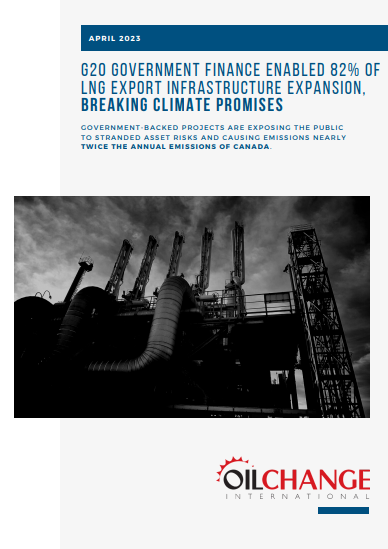
Briefing: G20 government finance enabled 82% of LNG export infrastructure expansion, breaking climate promises
This new briefing shows G20 government institutions were involved in financing 82% of new Liquefied Natural Gas (LNG) export terminal capacity built from 2012-2022, providing at least USD 78 billion in loans, guarantees, and equity investments for new LNG export terminal capacity projects.
April 2023
This briefing shows G20 government institutions were involved in financing 82% of new Liquefied Natural Gas (LNG) export terminal capacity built from 2012-2022, providing at least USD 78 billion in loans, guarantees, and equity investments for new LNG export terminal capacity projects. The loan portion of this alone made up 24% of all capital investment in new LNG export terminals during this period.
The briefing also reveals that:
Japan, China, Korea, and the US are the biggest public financiers of new LNG export capacity.
These publicly-backed projects are causing ??928 megatonnes of CO? equivalent per year, nearly twice the annual emissions of Canada.
Government support is continuing to enable future LNG expansion. At the start of 2023, 83% of under-development LNG export terminal capacity expected to be completed by 2026 has public finance backing, amounting to USD 33 billion in financing. If completed, these new projects will drive the addition of a further 654 megatonnes of CO? equivalent each year.
This new data bolsters previous case studies and industry reports showing that with
government backing and often below-market terms, international public finance has been
playing an outsized role in getting these large, risky fossil infrastructure projects built. But,
this role may be shifting. If momentum continues behind the Glasgow Statement initiative to
end international public financing for LNG and other fossil fuels from the start of 2023, LNG
terminals will be more difficult to finance and complete, and this money can instead be used
to catalyze a just energy transition.

